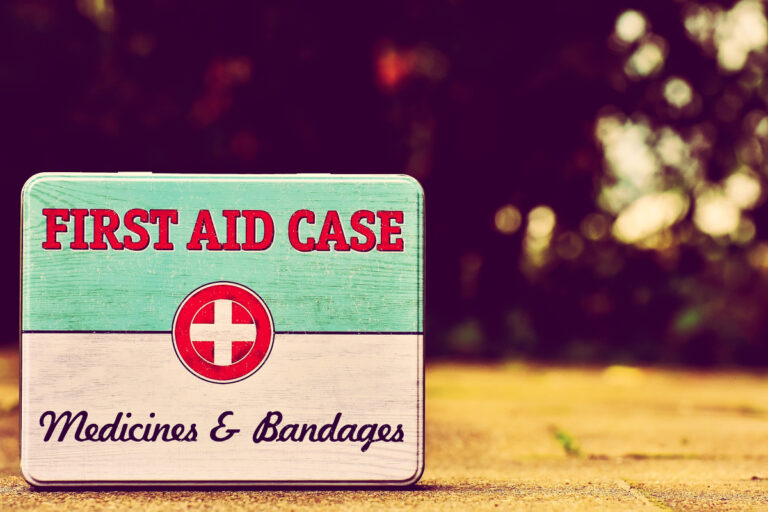Teaching your children First Aid rules teaches them, early on, how they can depend on themselves. A child who learns the skills for self-reliance has shown to be more eligible for prestigious jobs in adulthood. Here are 6 rules you might want to teach your kids that they’ll understand.
1. Call 911
When we’re old enough to count, we’re old enough to dial 911 (“nine one one”). When explaining this rule, be sure to thoroughly tell them what counts as an emergency – and only dial 911 if one of those emergencies occurs. It is vital to teach them how telling the operator that they need help and to give them the address. If possible, rehearse them through a typical scenario – with you playing the role of the operator.
- Have them pretend dial 911
- You “pick up” the phone and say “What’s your emergency?”
- Go through with them possible scenarios that could happen
2. Using a first aid kit
First Aid kits are important for treating wounds, scraps and preventing infection or spreading diseases. Explain what each item in the med kit is used for, goes a tremendously long way to ensuring they know how to properly treat whatever the problem is. Again, create imaginary scenarios with them – making a “game” of sorts if possible.
First Aid kits can be purchased at drugstores. Alternatively, you could also make your own. Here are the basics of what you may need for a functional kit:
- Gauze pads cover wounds and burns
- Antibiotic cream (Polysporin) for rashes and surface wounds and Calamine for insect bites
- Sterile gloves protect infections and are ideal for bloody injuries
- (Non)-adhesive bandages for wrapping sprains and wounds
- Scissors
3. Stop Bleeding
Teach them this rule: if they see blood, put pressure on the wound. Remind them that it is OK to feel pain when applying pressure – this is how the bleeding stops. When teaching them how to help someone else who is bleeding, show them how to use a plastic bag (or a wadded-up cloth) wrapped around their hand to stop the transfer of blood-transmitted diseases.
4. “Stop, Drop and Roll”
One day my elementary school took me to a fire station, showing fire safety procedures. One of those was the classic “Stop, Drop and Roll” technique. At the time I thought it was silly… until, as a teenager, I ended up playing with gas and matches. Bad news – my leg caught on fire. Luckily, the “SDR” technique stopped my leg from being severely burned.
- Stop
- Drop to the ground (and cover face with hands)
- Roll over back and forth like they’re a burrito
5. CPR
This one rule is most crucial for saving someone’s life. It is your responsibility as a parent to teach them this mantra: “Is someone not breathing? Start CPR.” While hands-only CPR requires a bit of force, which he/she/it may not have, they will eventually grow muscles as they develop. When someone has cardiac arrest, CPR is literally the difference between life and death. If your child is interested, make a family day of attending local CPR courses – they may even get a CPR Scholarship.
6. Bone Fractures
Broken bones (“fractures”) are a part of life. However, it is crucial to explain to your child that a broken bone is extremely painful. This pain might tempt them to “push” the bone back into the body. It is vital to show your children how to make the situation as comfortable as possible while help arrives.
Teach them…
- Check for breathing and a heartbeat
- Not to move
- Assess any bleeding problems (using the examples above)
- If possible, apply ice to the area to get rid of the swelling
- Remain calm
Conclusion
As adults, when we burn our hands cooking, we immediately know to rush our hands under a cold faucet. Your child, experiencing this for the first time, may panic and not know what to do. Fear sets in. Imagine how confident and proud you’ll make your children by showing them exactly what they need to do to get rid of the problem.



